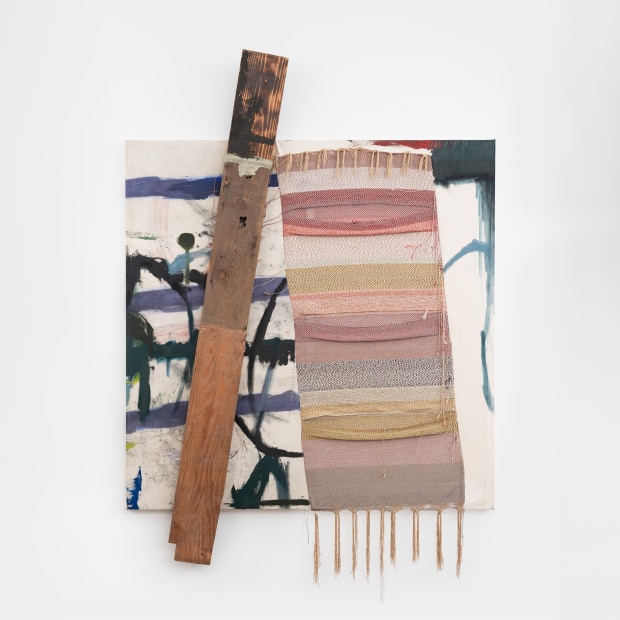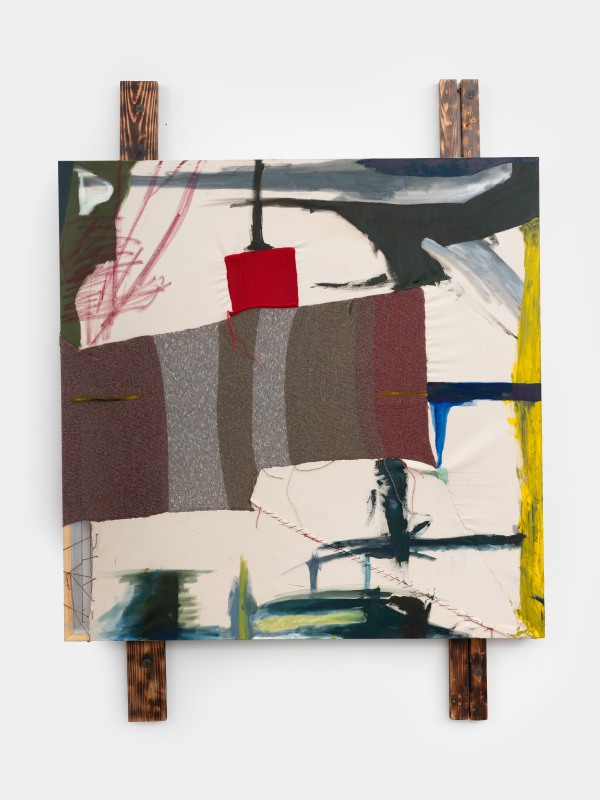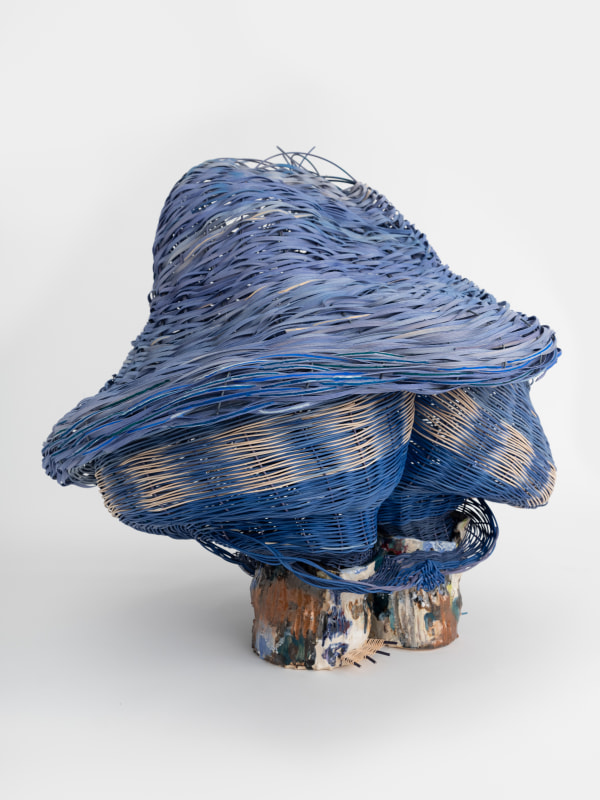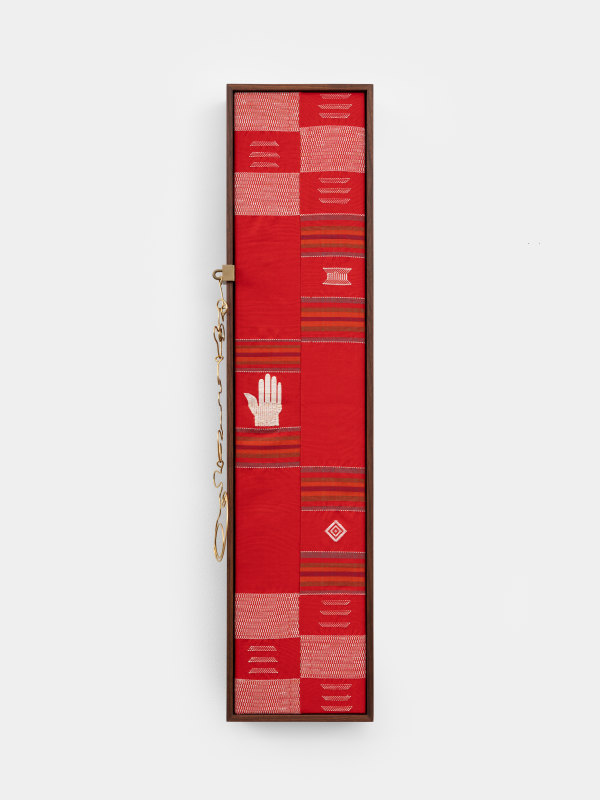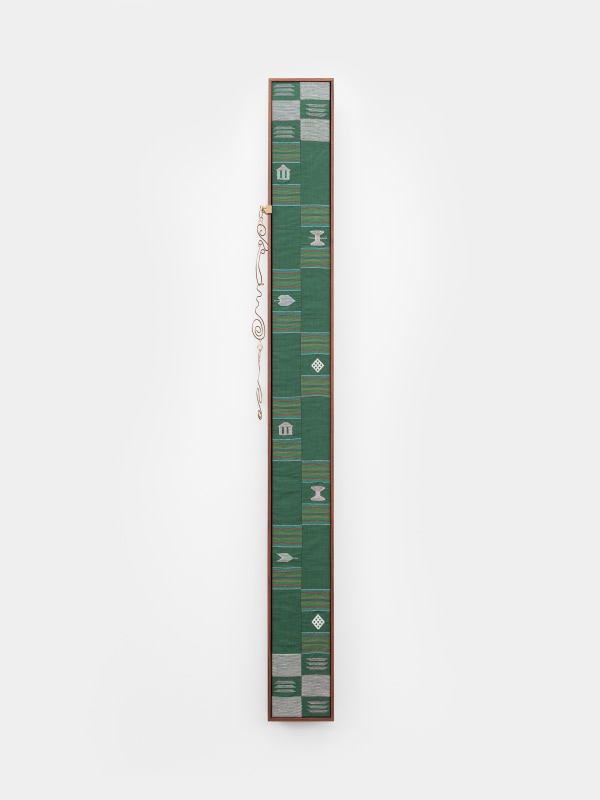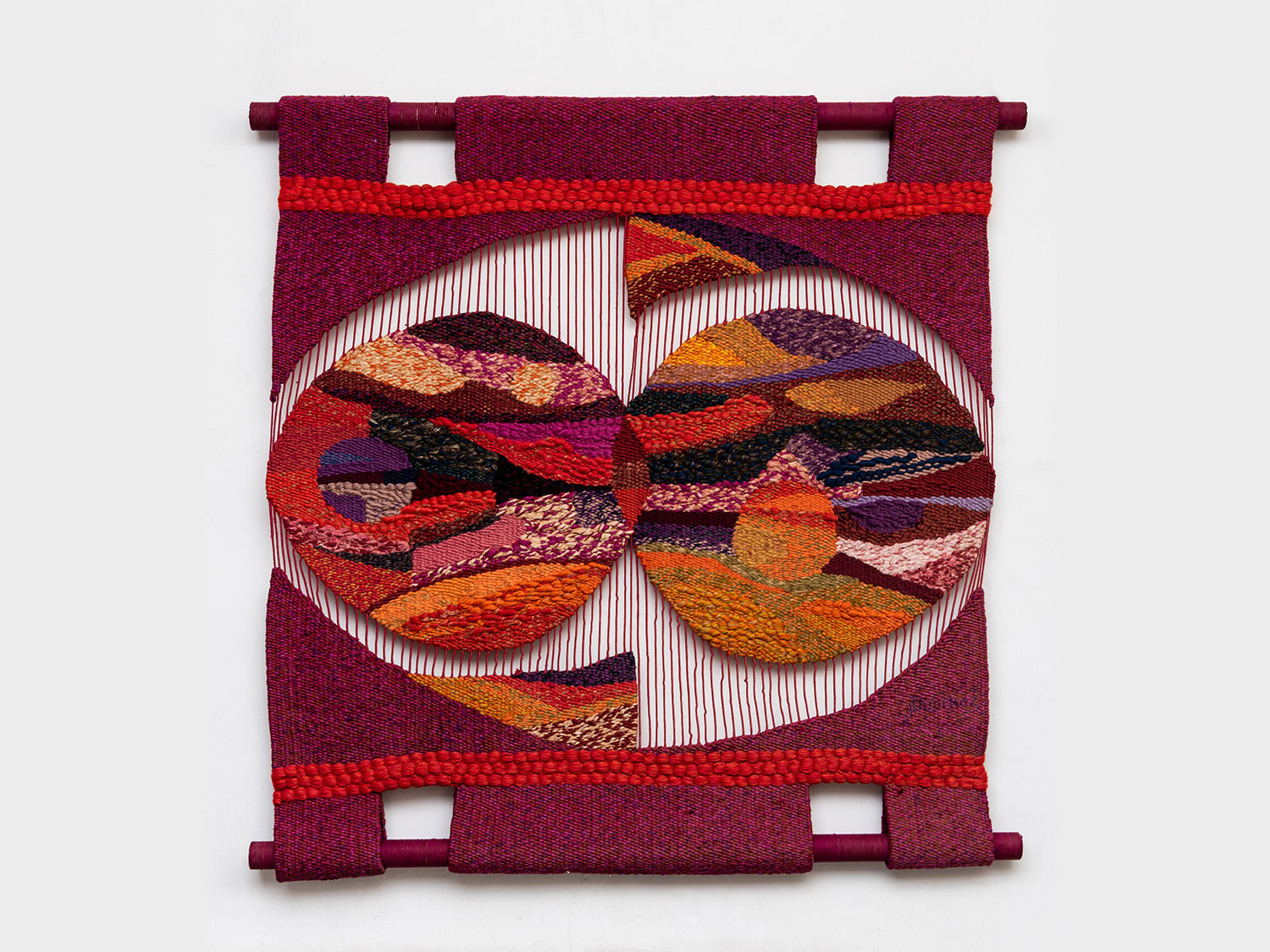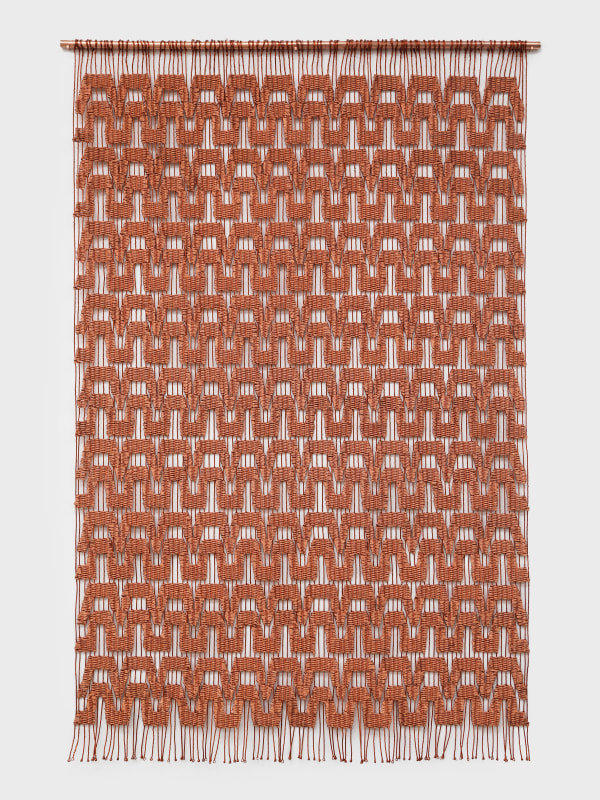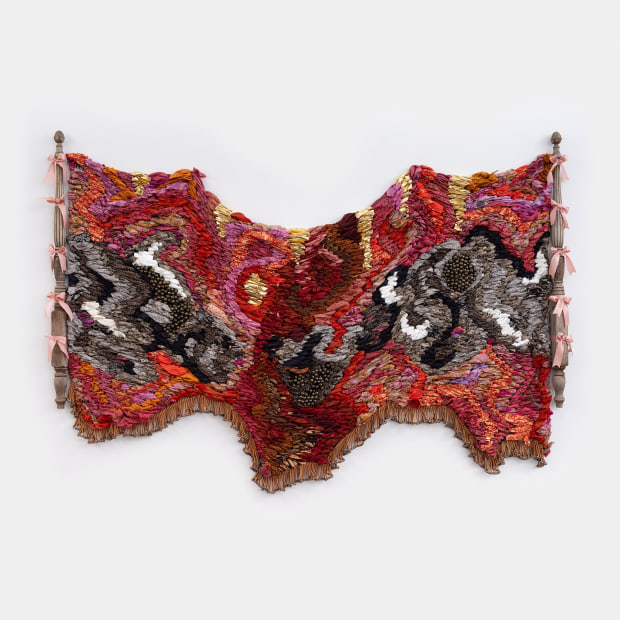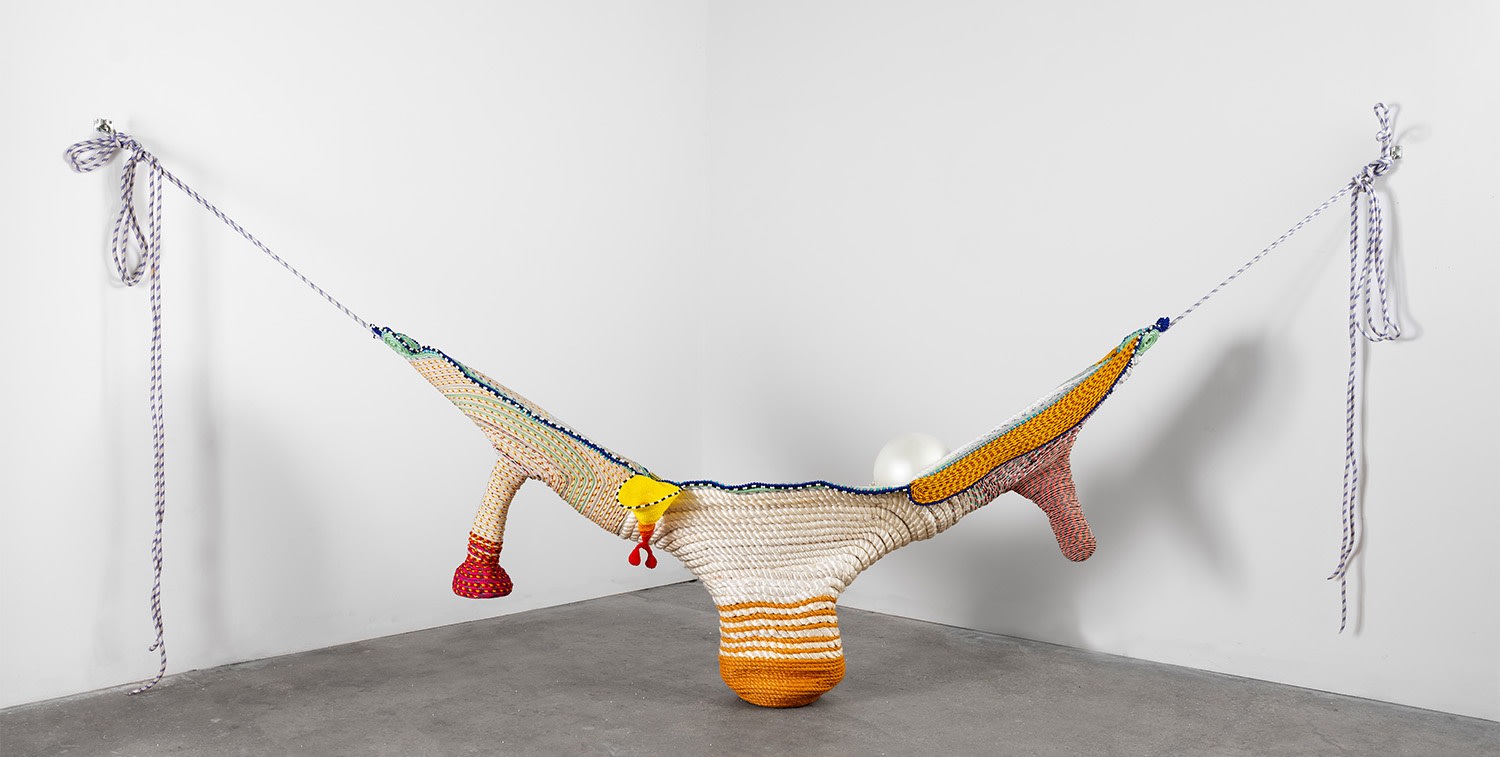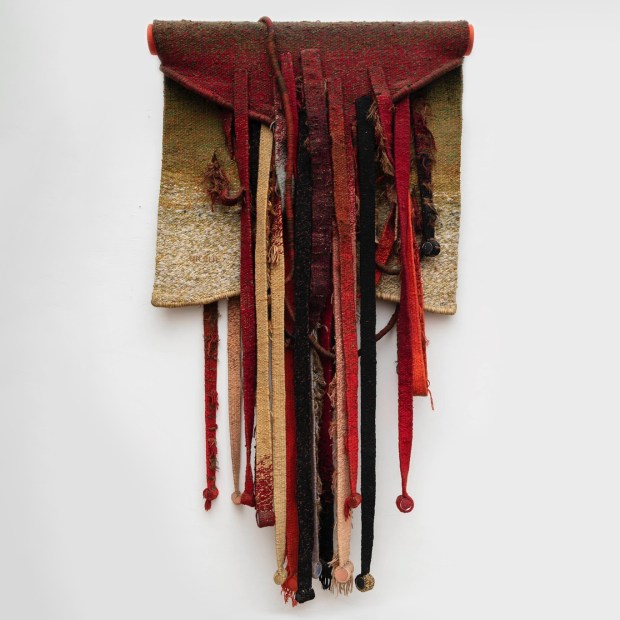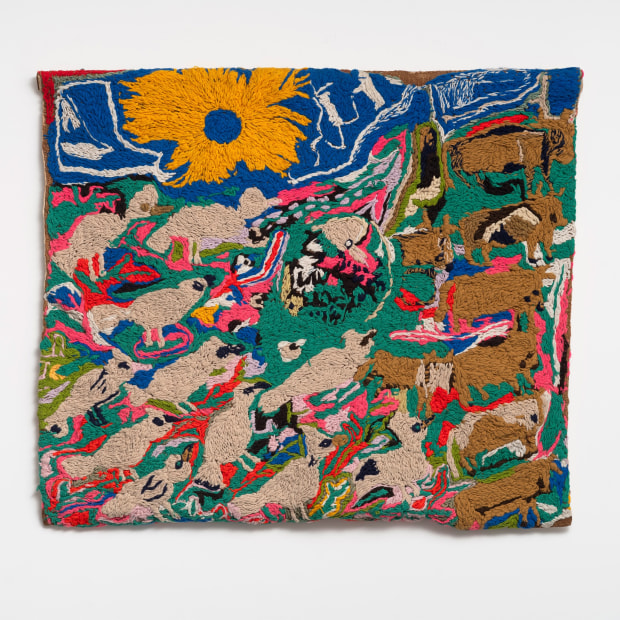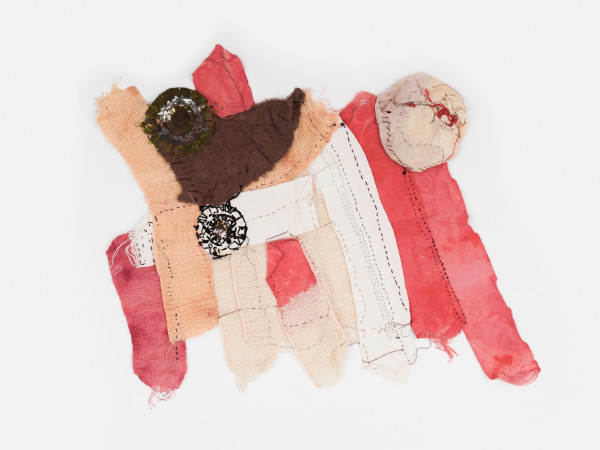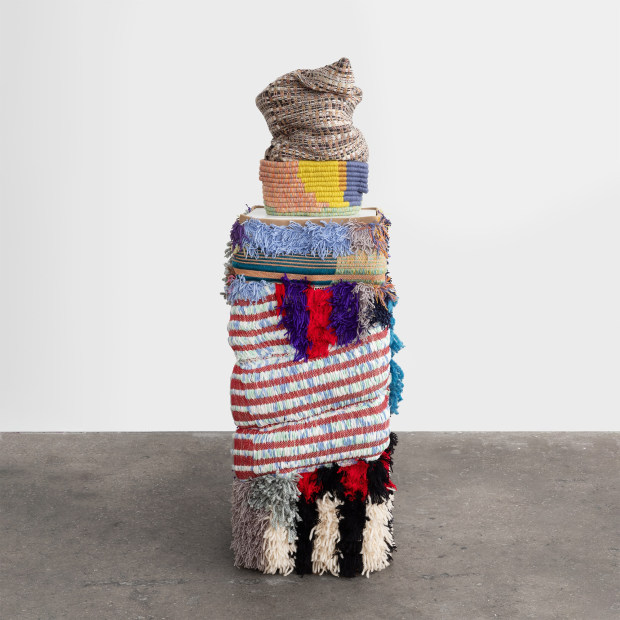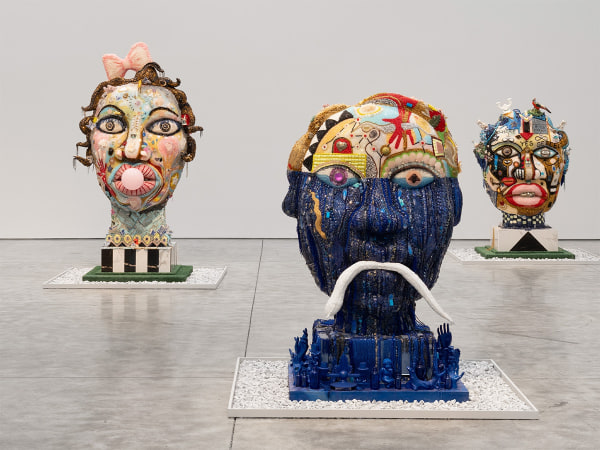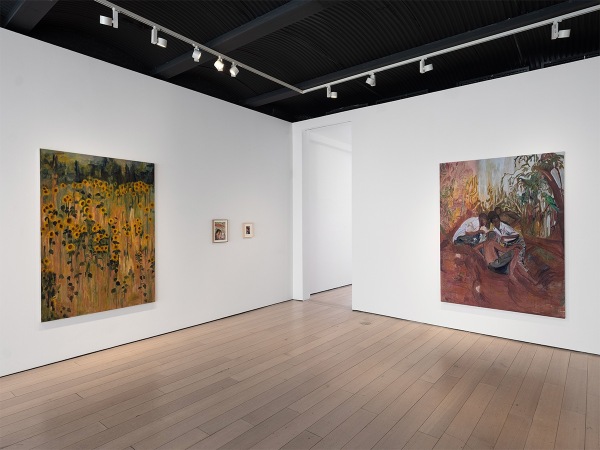Crossings
-
-
Kasmin is pleased to present Crossings, an exhibition that brings together an international and intergenerational group of artists exploring the enduring resonance of weaving, textiles, and embroidery in contemporary art. On view at 509 West 27th Street from June 27 through August 9, the exhibition examines a variety of practices that engage the poetics of fabric—its languages, genres, forms, and modes of composition. Examining the ability of woven material to expand, transform, and complicate artistic disciplines, the exhibition incorporates work by artists whose practices span textile, painting, sculpture, installation, and conceptual art, including Claudia Alarcón, Olga de Amaral, Hellen Ascoli, Teresa Baker, Vamba Bility, Julia Bland, Vivian Caccuri, Dee Clements, Kenturah Davis, Jacques Douchez, Ximena Garrido-Lecca, Sonia Gomes, Suchitra Mattai, Maria Nepomuceno, Norberto Nicola, Madalena Santos Reinbolt, Judith Scott, Tyrrell Tapaha, T. Vinoja and Sarah Zapata.
Including new works made especially for the exhibition, this cross-section of 21st-century practices probes the expressive possibilities of fiber, fabric, and interwoven material, contextualized by three influential wool and tapestry works from the 1960s, 1970s, and 1980s. Exploring the foundational dialectic of warp and weft, the works represent just some of the generative articulations of humanity’s earliest binary language and original information technology. A structural rhythm, imparted by the crossing of threads over and under one another, resounds through the exhibition into a salient agent for spatial, material, and metaphorical complexity. Each artist approaches fabric, whether social, material, or historical, as a repository for encoded meaning, memory, and narrative. Inspired by the etymological connection between “text” and “textile,” the exhibition spotlights singular practices that reconfigure the limits of artistic possibility, borrowing elements of abstraction, critical theory, and autobiography. Considered together, each work on view investigates history, mythology, and the psychology of self to imagine new frameworks for telling one’s story.
-

-

-
-
Hellen Ascoli’s (b. 1984, Guatemala City) multidisciplinary practice reflects on weaving and its ability to connect the body, environment, and object together through a relational experience. Working with a back-strap loom, a mobile device tied around the artist’s body and attached to a support to provide tension, Ascoli weaves textile installations that transform her body into an essential tool in her practice. Connecting her body to the space where she works, Ascoli situates herself through frameworks of proprioception, affordances, and translation.
-
-
The artists on view employ a variety of processes that make innovative uses of textiles to blur boundaries between painting, sculpture, and installation. The exhibition underscores the range of material that can be woven, incorporating not just natural fibers but also copper, as Ximena Garrido-Lecca demonstrates with embedded references to contemporary and ancient uses. The sculptural forms of Olga de Amaral or the Shifu weaving of Kenturah Davis point to the wide range of possibilities achieved with various types of paper or precious metals. Stitching, bending, and hanging their materials, artists including Hellen Ascoli and Maria Nepomuceno explore the elements of weight and tension with rope, beads, wood, or wool, activating the architecture of the gallery. For some, weaving provides a framework to examine humanity’s relationship to natural ecosystems, seen in Vivian Caccuri’s manipulation of mosquito nets or Tyrrell Tapaha’s use of plant dyes. Others, such as T. Vinoja, gesture to the ability of textiles to act as both a force of recovery and an index of past experience. Artists including Sonia Gomes, Suchitra Mattai, and Vamba Bility, give new life to repurposed materials whose combinations reclaim and weave new modes of expression.
-

-

-
-
The works on view capture the stylistic diversity kindled by the versatile nature of textiles, with references to the earth and the touchstones of collective memory. The abstract patterns of Claudia Alarcón or Julia Bland, and the protruding shapes of Dee Clements or Judith Scott, are seen alongside forms that allude to life, including the anthropomorphic forms of Sarah Zapata and the pastoral scenes of Madalena Santos Reinbolt. Incorporating pigments to challenge conventions of painting, Jacques Douchez and Norberto Nicola’s respective tapestries approach sculpture, vitalizing the three-dimensional quality of works such as Teresa Baker’s exploration of nature and artifice. Unearthing rich and varied developments in the decades since the 1960-70s fiber art movement, Crossings celebrates the role of artistic imagination in shaping generations of human experience. Considered together, these works demonstrate the breadth of possibilities that weaving offers to contemporary art, broadening our understanding of the medium as a creative force untethered to identity, geography, or historical period.
-
-

-

-
-
Dee Clements (b. 1980) uses basketry to combine elements of painting, sculpture, ceramics, furniture making, and weaving. With reed, cane, clay, rope, and wood, she creates corporeal-like vessels that reference female bodies and experiences. She dyes and paints her works intuitively and improvisationally in often bold and vibrant color combinations to highlight or exaggerate parts of the forms. Clements has a deep love of and interest in craft and ethnography. She holds an MFA in 3D Design from Cranbrook Academy of Art and BFA in Fiber/Materials Studies and Sculpture from The School of The Art Institute of Chicago. Clements lives and works in Chicago.
-
-
-
Kenturah Davis’s (b. 1983, Los Angeles) work oscillates between various facets of portraiture and design. Using text as a point of departure, she explores the fundamental role that language has in shaping how we understand ourselves and the world around us. This manifests in a variety of forms including drawings, textiles, sculpture and performances. Davis earned her BA from Occidental College and MFA from Yale University School of Art.
-
 Jacques DouchezUntitled, 1973wool, natural fibers, and pigments59 1/2 x 54 3/8 inches
Jacques DouchezUntitled, 1973wool, natural fibers, and pigments59 1/2 x 54 3/8 inches
151 x 138 cm -
Jacques Douchez (1921-2012) devoted himself to painting and tapestry for over 60 years. He is recognized for his geometric compositions made with lush colors that recall the Brazilian landscape. In 1959, along with Brazilian artist Norberto Nicola, he founded Atelier Douchez-Nicola, embarking on the research and improvement of tapestry techniques, permanently incorporating them into his artistic work. There, the artist conceived of his works as “woven objects,” or three-dimensional works filled with expressivity and structure, subverting the plane form and the materials of the common tapestry.
-
-
-
Ximena Garrido-Lecca (b. 1980, Lima, Peru) examines the turbulent history of Peru, and specifically how neocolonial standards are transmitted through the processes of globalization. The artist approaches her works by scrutinizing urban, rural, and vernacular architecture, concentrating on spaces where a mediatory materiality is visible between the specific and the universal. Equally important is the memory of artisanal tradition and the abandonment of rural spaces as an aftereffect of the processes of modernization. Her work insinuates a permanent tension between the inheritance of vernacular culture and the new demands of industrialization, signaling the violence contained in an accelerated transnational economic model in increasingly open confrontation with the protection of the environment, sovereignty, and respect for different community lifestyles.
-

-

-
-
 Maria NepomucenoUntitled, 2015rope, beads, ceramic, fiberglass and resin47 1/4 x 128 x 23 5/8 inches
Maria NepomucenoUntitled, 2015rope, beads, ceramic, fiberglass and resin47 1/4 x 128 x 23 5/8 inches
120 x 325 x 60 cm -
Maria Nepomuceno (b. 1976, Rio de Janeiro) creates vibrant sculptures and installations that evoke the nature of organic forms. Utilizing a wide range of materials—including rope, beads, ceramics, gourds, wood, and woven carnauba (palm) straw—her work draws upon traditional methods of Brazilian craftsmanship, as well as her own personal techniques of braiding and weaving. The spiral form is integral to Nepomuceno’s work, in both a functional and spiritual sense. Drawing from a central point of origin, the spiral permutations expand outwards, suggesting the infinite movement of time and a vital energy of spirit. Rich colors pass and interweave smoothly into one another, imbuing her sculptures with a shimmering, pulsating quality: alive, and drawing in breath.
-

-

-

-
-

-
-
T. Vinoja’s (b. 1991, Kilinochchi, Sri Lanka) trajectory as an artist is shaped by internal displacement and forced migration since childhood. Her textile art, drawings, and installations examine how sites and material archives convey experiences of loss, forced abandonment and shattered realities, especially during the final chapter of the civil war in Sri Lanka’s North East and its prolonged aftermath. T. Vinoja treats the cloth as second skin, it is a space of shared witnessing, profuse recollections, and cleansing an anatomy of remembrances.
-

-

-
-
Join our Newsletter
* denotes required fields
We will process the personal data you have supplied in accordance with our privacy policy (available on request). You can unsubscribe or change your preferences at any time by clicking the link in our emails.
-
Explore
-

vanessa german: GUMBALL—there is absolutely no space between body and soul
April 3 – May 10, 2025 509 West 27th Street, New York, 514 West 28th Street, New YorkKasmin presents its second solo exhibition of new work by artist vanessa german, which debuts related bodies of sculpture across two of the gallery’s spaces in New York. The exhibition deepens german’s singular approach to sculpture as a spiritual practice with the power to transform lived experience. Both series comprise mineral crystals, beads, porcelain, wood, paint and the energy that these objects bring to life to form monumental heads and figures in the act of falling. Together, each body of work envisions the transformation of consciousness necessary to imagine a new world. -

Helena Foster: Time Honoured
April 3 – May 3, 2025 297 Tenth Avenue, New YorkThe first New York solo exhibition of London-based painter Helena Foster features new oil paintings on linen, paper, and vellum that express the artist’s lyrical approach to painting as an accumulation of cultural and generational wisdom. Foster draws freely from literature, theater, film, Igbo oral tradition, and religion, achieving a dreamlike aura of mystery in dynamic compositions ambiguously set between thick vegetation and the built environment.
-
-
Explore
- Diana Al-Hadid
- Alma Allen
- Theodora Allen
- Sara Anstis
- Ali Banisadr
- Tina Barney
- Judith Bernstein
- JB Blunk
- Mattia Bonetti
- William N. Copley
- Cynthia Daignault
- Ian Davenport
- Max Ernst
- Liam Everett
- Leonor Fini
- Barry Flanagan
- Walton Ford
- Jane Freilicher
- vanessa german
- Daniel Gordon
- Alexander Harrison
- Elliott Hundley
- Robert Indiana
- Lee Krasner
- Les Lalanne
- Matvey Levenstein
- Lyn Liu
- Robert Motherwell
- Jamie Nares
- Nengi Omuku
- Robert Polidori
- Jackson Pollock
- Elliott Puckette
- Alexis Ralaivao
- George Rickey
- James Rosenquist
- Mark Ryden
- Jan-Ole Schiemann
- Joel Shapiro
- Bosco Sodi
- Dorothea Tanning
- Naama Tsabar
- Bernar Venet

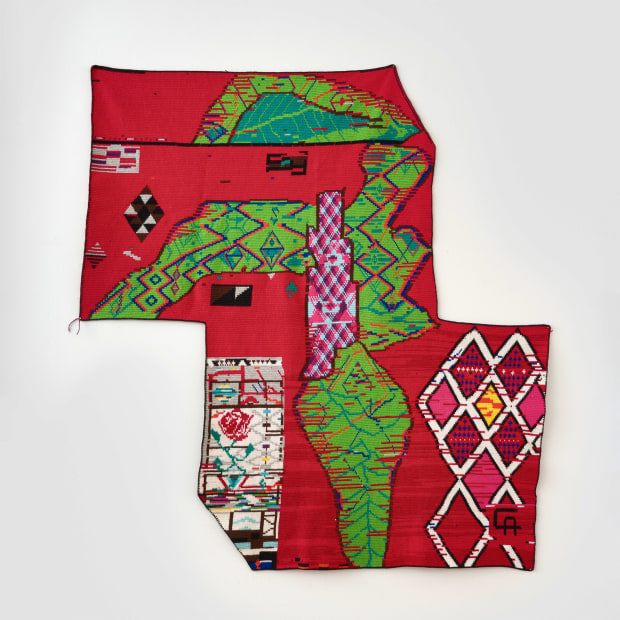
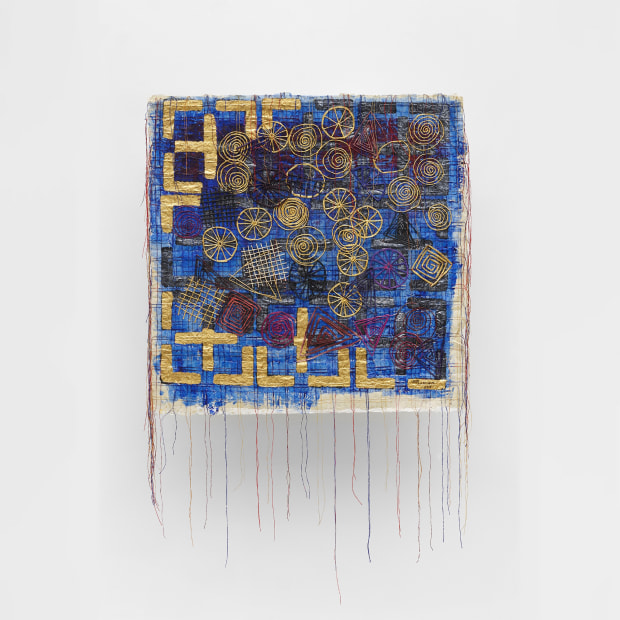
![Hellen Ascoli, Cien Tierras [One Hundred Earths], 2020-2021](https://artlogic-res.cloudinary.com/w_600,c_limit,f_auto,fl_lossy/artlogicstorage/pkg/images/view/4633d15f9028dc1e95bea6d2973060b7j/kasmingallery-hellen-ascoli-cien-tierras-one-hundred-earths-2020-2021.jpg)


